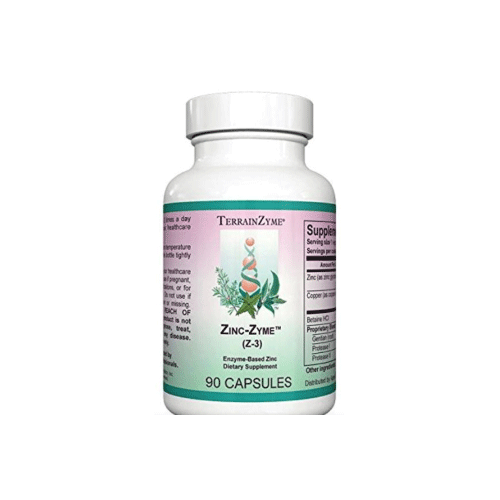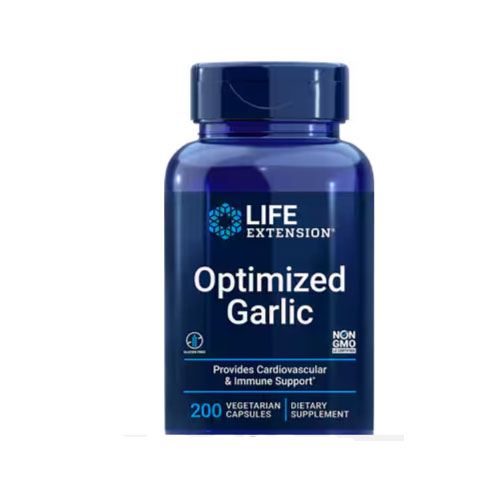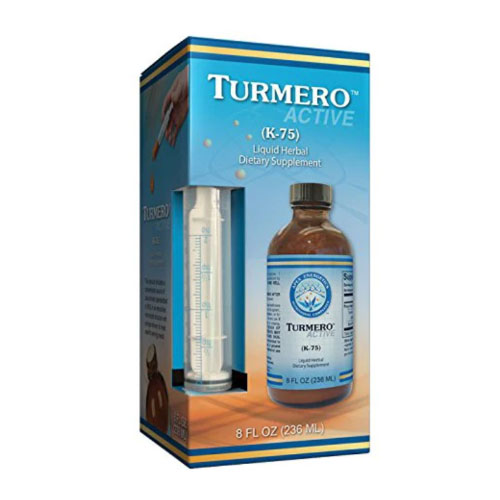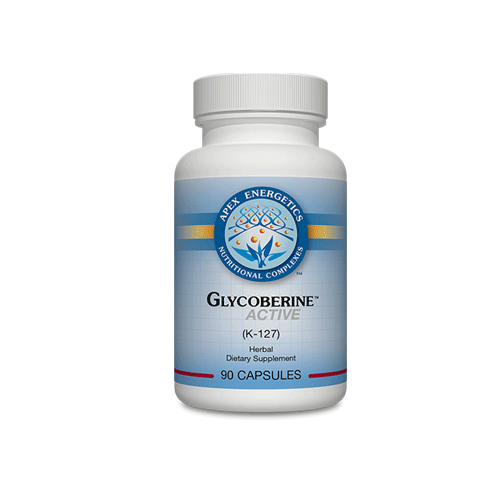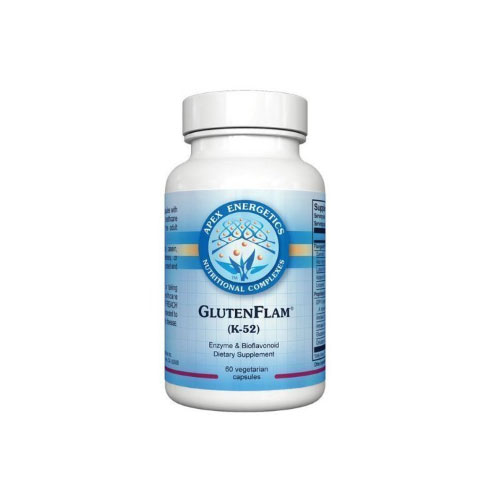10 Steps for Healthy Brain Function:
How to Delay and Possibly Reverse Alzheimer’s Disease.
Relive with us, dear readers, that unforgettable moment in May 2023 when Teddy crashed his vintage 1978 Lincoln Continental through his garage wall into his kitchen. Recall the glorious destruction of the kitchen sink, stove, oven, and refrigerator and the birth of a surprising new entryway into his home. (1)
No, you don’t remember Teddy? New to our blog? Otherwise, you’ve regaled with us in the “Tales of Teddy.” (5/16, 5/26, 6/13, 6/23, 8/9/2023) (44)
Everything about Teddy is big. He refers to himself as ‘Big T.’ His hands are big. His feet are big (size 13)! His head is enormous. Teddy is 6 foot 3 inches tall and weighs 295 pounds, with at least 50% of it jiggly fat.
“Need more room for my brains,” Teddy said when I pointed his size out. “Though lately, the old memory seems to be failing.”
We started Teddy on our Resveratrol (‘reverse-it-all according to Big T) regimen five months ago, and Teddy feels much better. (2)
“I’m misremembering things less,” Teddy said. “My ‘loose screw,’ as Steph (his
long-suffering wife of forty-nine years) puts it, is a little less loose. But I know I can do better.”
“Of course,” I said. “We can always do things a little better today than last week. Most times, it only takes a little bit of will and determination.”
“I haven’t put the car keys in the freezer lately,” Teddy said. “Progress.”
“And I haven’t driven out to the Black Rock Desert and not remembered how I got there.”
“More progress,” I replied. {‘ll send your application to the Mensa Society in the morning.”
“Joker,” Teddy said. “So, tell me, Doc. Where do we go from here? I’m not ready to
spend every day feeding the pigeons in the park and waiting for a nightly scoop of tapioca.”
“It depends on your symptoms,” I said. “We suspect some dementia, which is supposed to be irreversible, as a given. Dementia affects memory, thinking, and social abilities severely enough to interfere with your daily routine. (3) Are you doing any of these?”
- Subtle short-term memory “Yes.”
- Difficulty finding the right “Yes”
- Mood changes.
- Apathy
- Difficulty in completing routine Difficulty in following storylines.
- A failing sense of direction.
“Yes, yes, yes, and yes,” Teddy said less emphatically with each ‘yes.’. “As we surmised,” I said.
“What’s the difference between that and Old-Timer’s Disease?” Teddy asked.
“Alzheimer’s Disease,” I said. “Alzheimer’s Disease is a type of dementia leading to memory, thinking, and behavioral issues. Alzheimer’s is progressive and, unfortunately, fatal. Does any of this sound familiar?” (4)
- Memory loss disrupts day-to-day You may misplace everyday items.
- Planning and problem-solving Concentration issues.
- An inability to complete simple You are not taking part in your usual activities.
- “Me and Steph haven’t been dancing in months,” Teddy said.
- Confusion as to time and place. New onset of poor judgment.
- Difficulty with visual images, reading comprehension, or judging
- New difficulties following or joining
“How do I know if it’s not just old age-related issues,” Teddy asked.
Alzheimer’s Age-Related Changes (5)
| Poor judgment and decision-making | Make a bad decision once in a while |
| Misplace items, inability to retrace steps | Occasional loss of articles with the ability to retrieve same. |
| Inability to manage a budget | Missing an occasional payment |
| Losing track of the date or season | Forgetting, then remembering later the date |
| Difficulty with most or all conversions | Sometimes, forgetting a word |
“What can I do?” Teddy asked.
“Lots of things,” I said. “At least ten.” “Only ten,” Teddy asked.
“If you behave yourself, we can make it an even eleven,“ I said.
10 Steps to a Healthy Brain:
- Keep Your Blood Sugar Balanced
- Eat Healthy Fats
- Get Adequate and Restful Sleep
- Enough (but not too much) Vitamin D3 is Essential for the Brain to Function Properly
- Get Your Gut In Order
- Maintain Adequate Methylation
- Balance Your Hormones
- 6 Fixes for A Healthy Heart
- Exercise
- Lifetime Learning
“I don’t like this list,” Teddy said. “Got to get going, Doc.” “Scaredy cat much,” I asked. “Touched a nerve, did I?” “No, Doc,” Teddy answered.
“Sure, sure,” I replied. “Well, let’s at least get started,” I replied. “Then, next time, we can add some more.”
1. Keep Your Blood Sugar Balanced.
Think about this, Teddy,” I said. “You are out one night at the movies. When you get home, your front door is wide open, and the police are there. You’ve been robbed.”
“I don’t want to think about that,” Teddy said.
“Stay with me here,” I replied. “The police are at your house. Your living room furniture is all gone.”
“My La-Z-Boy? The crooks took my Lay-Z-Boy? I love that chair. Saved a whole year for it.”
“Well, the crooks got your Lay-Z-Boy,” I said. “Now, most times when there is a burglary, the police are there. So, you might conclude that the police caused the robbery.”
“That’s ridiculous,” Teddy said. “They don’t show up until after the robbery.”
“Exactly,” I said. “The police don’t show up as the robbers. They show up because of the robbers.”
“Likewise, high blood sugar is not the cause but the effect of a poorly functioning organ known as the pancreas. The pancreas generates insulin. We can only make so much in a lifetime. Like an alcoholic who needs more and more booze to get the same “high,” when we bombard our body with too much sugar, in the form of sugar itself or simple carbohydrates, cookies, candy bars, and sodas, we develop an immunity to insulin’s effect. The result is persistently higher and higher blood sugar levels. Eventually, the insulin we generate is either ineffective or insufficient.” (6)
“The downstream effect of “insulin” resistance is brain ‘starvation.’ The brain atrophies and shrinks, function, memory, speech, movement, and personality traits become impaired.
Continuously feeding refined foods yields increased glucose levels. Elevated glucose levels damage blood vessels (atherosclerosis) and decrease neurotransmitter function. Moodiness and anxiety result.”
“What can I do?” Teddy asked.
Action Step # 1:
Replace refined carbohydrates with
- Quinoa, brown rice, oats, buckwheat, millet, whole meal bread, and wholemeal pasta
- ↓ High-sugar foods such as white bread, white pasta, and white rice, pastries, confectionery, and sugary fizzy drinks
- Reduce with a goal to eliminate stimulants, such as coffee and alcohol, which raise blood sugar levels.
- Normalize blood sugar with intermittent fasting or a whole-food, low-glycemic diet. (7)
“What,” Teddy asked. “No fancy notions?” “Notions?” I replied.
“Notions,” he said. “You know, vitamins, herbs, minerals, supplements. All those fancy colored notions you send me.”
“Oh,” I replied. “Like cinnamon to improve insulin usage. One gram a day of plain old store-bought cinnamon can lower your fasting blood sugar levels by 18-29%. (8-9) Notions like that?”
“That’s the ticket,” Teddy said. “But the medical books say you need Ceylon cinnamon.”
“They do,” I replied. “Ceylon cinnamon is purer for sure, but very expensive. We’ve done as well with the better-quality supermarket brands. No need to spend $30 for a pound.”
“What else? ” Teddy asked. “I know there are others.”
“There are a lot of substances in nature that can improve your blood sugar profile,” I replied. Berberine at 1000-1500 mg daily increases insulin sensitivity and production,
regulates metabolism, increases glucose breakdown, increases nitric oxide, reduces glucose produced in the liver, and slows carbohydrate absorption from the gut.” (10)
“I’ve heard of Berberine,” Teddy said. “It’s all the rage down at the gym. They call it ‘Nature’s semaglutide.’”
“They do indeed,” I replied. “You need a whole lot of it to get the ‘semaglutide’ effect. Something like 1600-2000 mg per day minimum. At those levels, we see a lot of side effects.”
“Not much different than semaglutide, then.” Teddy said.
“A lot different. We’ve used berberine to improve blood sugar levels and lower cholesterol for over fifteen years. We will cover berberine another time.”
“Chromium (200-1000 ug/d) improves insulin sensitivity and lowers HbA1C levels by 1.0% at 200 mcg to 2.1% at 1000 mcg daily. “ (11-12)
“Alpha-lipoic acid (ALA) dosed at 300-600 mg daily acts as an antioxidant, a metal chelator, and reduces oxidized Vitamin C, vitamin E, and glutathione. ALA inhibits nuclear factor kappa B and activates AMPK energy pathways in skeletal muscles, reducing peripheral neuropathy. (13)
“More,” Teddy said.
Magnesium-(200-500 mg) stimulates insulin secretion and lowers blood sugar by up to 23% @ 300 mg/d over three months. Adequate RBC-magnesium reduces the risk of diabetes mellitus type 2 by 22 % versus those with the lowest quartile magnesium levels.” (14)
Gymnema Sylvestre (200-400 mg/d) decreases sugar cravings within 30 seconds! Gymnea suppresses sweet tastes, increases insulin production, and decreases sugar and fat absorption by up to 44%.” (15)
Bitter Melon (2-5 gm/d)-activates our AMPK energy pathways. It contains P substance, an insulin-like, antioxidant, antiviral peptide.” (16)
“And lastly, for now,” I said. “Our old friend Vitamin D (titrate to 50-80). Vitamin D
decreases fasting blood sugar by up to 11% and insulin utilization by one-third. (17)
“That’s a lot of pills, Doc,” Teddy said.
I shrugged. “Come on, Teddy. You know they come in combinations. Usually, one or two will do. Now, let’s move on. There’s lots more you can do.”
2. Eat Healthy Fats.
“Healthy fats,” I said.
“Healthy fats,” Teddy cried, his face reddening. “Healthy fats?” Me think I touched a nerve.
“Really? You genius doctors told us in the eighties and nineties that fats were bad. Bad! Really bad! Worse than bad. Don’t eat fat. Cholesterol is a killer. “You are going to die. Butter, ha! Trans-fat margarine is the way to go. Avocados. For shame.
Coconut oil? You doctors treated a coconut like Dracula treats the sun at dawn. Every patient’s cholesterol should be zero. Zero. That’s a big fat Jim Otto double zero. OO.”
Teddy had a fire in his eyes and his voice.
“There were Seinfeld episodes about fat. My heart specialist darn near had a heart attack himself when I told him I used olive oil as a salad dressing. He said I might as well have loaded a gun with six bullets and played Russian Roulette. “Olive oil!”
“Most pistols only have six chambers,” I said, trying to distract him. “Russian Roulette usually only has one bullet in the chamber.”
“You think I don’t know that? Teddy asked. “You think I don’t know what Russian Roulette is. Misspoke. Ha. Like you all ‘misspoke?’
Teddy made a gesture like “air quotes.”
“Big surprise. All of a sudden, instead of having one fat kid in a high school class, half the school is fat. Obesity goes from 15% to 60-70% of the US population within ten years of your Einstein pronouncements.” (18-19)
There was no stopping him now. I just had to stand back and take the incoming. “What did you think would happen,” he asked.
“Unlike Fonzie from Happy Days,” I replied, “I can admit when I’m wrong. It was a mass formation psychosis then. So great was the fear of heart disease that our attention focused on a few thought leaders about one spoke of the atherogenic cycle. Like hypnosis, we all became enamored by the low-fat mantra. Sorry.” (20)
“And now?” Teddy said. “Sorry? Sorry? That’s it. The only ones who got it right were that Atkins fellow in New York, and you saw what happened to him. (In 1973, Dr. Robert Atkins, after releasing his “unorthodox Diet Revolution book, ” was subpoenaed to testify in the House Chamber of the U.S. Congress. He was, of course, vilified canceled today by the towering political intellects of the day as “a dangerous heretic.” (21)
“Reminds me of a few others…. Eh, never mind that. How much money did you all make off that scam,” Teddy asked. “With your food pyramids demanding eleven servings of carbs a day and lumping sugar and fats together as ‘empty calories?” (22).
“I know, I know,” I said. “Some of us came to our senses and relearned the basics. 60% of the brain is fat. (23) 25% of that is docosahexaenoic acid or DHA. DHA is a key component of fish oils, flaxseed oils, and…”
“Coconut oil?” Teddy asked.
“Coconut oil,” I replied. “It is ‘essential,’ namely diet-derived. We need these essential fats in 1-4 grams/day doses.“
“Now you tell us,” Teddy said. “I was just a shop owner, and I knew that. Doctors, ha. Snake oil salesmen in white coats.”
“DHA synthesizes neurotransmitters, ensuring the smooth functioning of the brain. (24) Adequate fat intake equals adequate verbal fluency and learning. Diminished levels of DHA results in memory loss, dementia, and Alzheimer’s Disease. 900 mg a day is what you need to help it along.”
“You are what you eat,” Teddy said. “So, what do I eat?”
“DHA-rich foods include fish, liver, and brains. Coconut oil is a rich source of DHA.” “Can we test for it?” Teddy asked.
“We can test Omega 3’s (the good), Omega 6’s (the bad), and Omega 9’s (in between) directly. A good proxy measure of the Omega 3/Omega 6 ratio is c-Reactive Protein (cRP). The normal range is 0-3.0 mg/dL. Optimally, we like to see cRP <1.0 mg/dL.
Action Step # 2:
Increase:
Avoid:
- Sardines, Anchovies, Mackerel, Herring, and Wild Salmon
- Flaxseeds, hemp seeds, chia seeds, and walnuts
- Extra-virgin olive oil, coconut oil, avocados, whole eggs, nuts, and
- Hydrogenated vegetable fats in processed foods such as shop-bought cakes and biscuits, hard margarine, takeaways, pastries, pies, and fried foods.
Step 3: Get Adequate and Restful Sleep
“One more point to get you started,” I said. “Sleep.”
“I sleep,” Teddy said. “3-4 hours a night, sometimes. I don’t want to miss anything.”
“Dummkopf,” I said, slapping Teddy upside his head. “You’re missing everything. I’ve seen you. You walk around like a half-dead zombie all day long. You fall asleep as soon as you sit still for three minutes.”
“Sleep lays the groundwork for new mental insights. Sleep is necessary for creativity, memory, and improved physical performance. (25) Sleep deprivation decreases Vitamin C, zinc, and magnesium levels and malfunctions the immune system, lowering serotonin and melatonin. Lack of sleep results in sugar and refined carbohydrate cravings.” (26)
I poked Teddy in his expanded waistline. “And then you get fat.”
“And I sleep better, how? “Teddy asked.
Action Steps # 3:
- Establish a regular routine. Go to bed each night and arise each morning at the same (27)
- Devote at least 7-8 hours per night to (28)
- Avoid large, heavy, spicy, new, or exotic meals late in the (29)
- Avoid stimulants, such as sugars, caffeine, chocolate, and nicotine, as they keep you up at Alcohol initially acts as a sedative. As its effects wear off, alcohol has a stimulatory effect. (30)
- Long naps should not be part of a typical Regular naps interrupt the sleep-wake cycle and make falling asleep more difficult at night. (31)
- Upon waking, go toward the sun. Bright sunlight regulates the sleep-wake cycle.
(32)
- Exercise 20-40 minutes daily for at least 2-3 hours before Vigorous exercise is best for the morning or afternoon hours. Perform relaxation techniques, yoga, tai chi, or deep breathing closer to bedtime. (33)
- The bed is for sleep and sex only. If you do not fall asleep within 15 to 20 minutes, leave the bed and engage in uncomplicated or relaxing activities (Stretching, tai chi, etc.) (34)
- Keep the bedroom at a cool, yet comfortable, (35)
- Keep it dark for melatonin production. Remove TVs, VCRs, and cell phones as they emit blue light, lowering melatonin production, the primary means of triggering the sleep cycle, by 50% within 13 minutes of (36-37)
- Sleep Aids:
- Clearfield’s Combo (2 hours before bedtime) (38)
- Vitamin D – titrate to 50-80 ng/dL, usually 5000 IU +
- Magnesium taurate- 100-400 mg/night +
- Clearfield’s Combo (2 hours before bedtime) (38)
- Melatonin– begin at 1 mg. Increase every 7-10 days until sleep is adequate (usually 3-10 mg. 30 mg is as high as we have treated patients in our practice)
- Can use IR/XR formulation if the patient has trouble falling asleep (IR) or staying asleep (XR)
- Vitamin B6 (200-800 mg) @ bedtime
- Calcium: Modifies serotonin production to increase melatonin production.
(39)
- Zinc: Zinc is involved in synthesizing melatonin by boosting the tryptophan/serotonin (40)
- Danshen: A traditional Chinese herbal remedy, Danshen enhances sleep quality, regulates circadian rhythms, and reduces (41)
- Tart Cherry Juice: Consuming a tart cherry juice concentrate for seven days significantly increases melatonin levels. Participants noted significant increases in time in bed, total sleep time, and sleep (P < 0.05)
(42)
- Extra Virgin Olive Oil: Contains twice the amount of melatonin than refined olive and sunflower oil. (43)
Summary:
Our rascally old pal Teddy is back. In this episode, Teddy scrambles to reverse seventy years of bad living as he realizes he is showing signs of dementia.
Teddy and Doc review ten steps for healthy brain function and possibly slowing Alzheimer’s disease. Today, they discussed the first three in detail. The ten steps are
- Balancing blood sugar by replacing refined carbs with whole grains and
low-glycemic foods. Incorporate supplements like cinnamon, berberine, chromium, alpha-lipoic acid, magnesium, gymnema sylvestre, bitter melon, and vitamin D.
- Eat healthy fats such as oily fish like salmon, mackerel, and sardines. Add olive oil, avocados, nuts, and seeds. Avoid trans fats. Testing may include the omega-3 to omega-6 ratio.
- Get 7-8 hours of sleep per night. Follow good sleep hygiene habits like a regular routine, avoiding stimulants at night, limiting naps, and optimizing the sleep Combining Vitamin D, 5000 IU, Magnesium taurate 100 mg, and melatonin 1-10 milligrams two hours before bedtime may help.
In our next episode, Teddy and Doc will continue their quest, discussing:
- Adequate Vitamin D levels (50-80 ng/mL.)
5. Improved gut health.
- Maintenance of adequate methylation.
7. Balancing hormones.
- 6 heart health tips.
9. Exercise routines, and
- Engaging in lifelong learning.
“Remember, Teddy,” I said. “Our goal is to improve your memory while delaying and possibly reversing Alzheimer’s disease and cognitive decline.”
“Wait, Doc. I have more questions,” Teddy said.
“Chao Bella,” I replied. “We are done for now. Get out. I have real patients to see.”
xxxxx
References
- Clearfield, W., Resveratrol, Cholesterol, and the Brain, https://longevinex.com/resveratrol-cholesterol-and-your-brain/ May 16, 2023
- Clearfield, , 50 Ways Resveratrol Improves Health: Discover The Benefits Of Resveratrol, https://longevinex.com/50-ways-resveratrol-improves-health-discover-the- benefits-of-resveratrol/ May 26, 2023
- DeMarco, B., What is the Difference Between Dementia and Alzheimer’s Disease?” The Alzheimer’s Reading Room, 24, 2017,
- http://www.alzheimersreadingroom.com/2014/08/difference-between-alzhe timers-and-dementia.html
- Alzheimer’s Association, “Know the 10 Signs and Symptoms of Alzheimer’s Disease,” http://www.alz.org/10-signs-symptoms-alzheimers-dementia.asp
- https://my.clevelandclinic.org/health/diseases/24178-hyperinsulinemia#:~:t ext=In%20the%20case%20of%20hyperinsulinemia,prediabetes%20and% 20Type%202%20diabetes.
- https://drclearfield.net/reno-weight-loss-treatment/
- Silva ML, Bernardo MA, Singh J, de Mesquita MF. Cinnamon as a Complementary Therapeutic Approach for Dysglycemia and Dyslipidemia Control in Type 2 Diabetes Mellitus and Its Molecular Mechanism of
Action: A Review. Nutrients. 2022;14(13):2773. Published 2022 Jul 5. doi:10.3390/nu14132773
- Khan A., Safdar M., Ali Khan M.M., Khattak K.N., Anderson R.A. Cinnamon improves glucose and lipids of people with type 2 diabetes. Diabetes 2003;26:3215–3218. doi: 10.2337/diacare.26.12.3215.
- Shen Y., Fukushima M., Ito Y., Muraki E., Hosono T., Seki T., Ariga T. Verification of the Antidiabetic Effects of Cinnamon (Cinnamomum zeylanicum) Using Insulin-Uncontrolled Type 1 Diabetic Rats and Cultured Biosci. Biotechnol. Biochem. 2010;74:2418–2425. doi: 10.1271/bbb.100453.
- Havel PJ. A scientific review: the role of chromium in insulin resistance. Diabetes Educ. 2004;Suppl:2-14. PMID: 15208835.
- Anderson RA, Cheng N, Bryden NA, Polansky MM, Cheng N, Chi J, et al. Elevated intakes of supplemental chromium improve glucose and insulin variables in individuals with type 2 diabetes. Diabetes 1997;46:1786-91.
- Golbidi S, Badran M, Laher I. Diabetes and alpha lipoic Acid. Front 2011 Nov 17;2:69. Doi: 10.3389/fphar.2011.00069. PMID: 22125537; PMCID: PMC3221300.
- Solati M, Ouspid E, Hosseini S, Soltani N, Keshavarz M, Dehghani M. Oral magnesium supplementation in type II diabetic patients. Med J Islam Repub Iran. 2014 Jul 15;28:67. PMID: 25405132; PMCID: PMC4219896.
- Kumar SN, Mani UV, Mani I. An open label study on the supplementation of Gymnema sylvestre in type 2 diabetics. J Diet Suppl. 2010;7(3):273-82. doi:10.3109/19390211.2010.505901
- Hellolife Polypeptide-P (plant insulin)- A natural treatment for diabetes. The smart living network. [Online] Available from: http://www.smartlivingnetwork.com/diabetes/b/polypeptide-p-plant-insulin- a-natural-treatment-for-diabetes
- Foroughi M, Maghsoudi Z, Askari G. The effect of vitamin D supplementation on blood sugar and different indices of insulin resistance in patients with non-alcoholic fatty liver disease
- National Center for Health Statistics. Health, United States, 2008 With Chartbook Hyattsville, MD: 2009.
- https://foodfix.co/wait-did-we-get-a-new-food-pyramid/
- https://www.forbes.com/sites/brucelee/2022/01/02/what-is-mass-formation-psychosis-robert-malone-makes-covid-19-vaccine-claims-on-joe-rogan-sh ow/?sh=60e5e4c11d4c
- Fishman, , “The Diet Martyr,” New York Magazine March 5, 2004. https://nymag.com/nymetro/news/people/features/n_10035/
- https://sites.psu.edu/millet/2015/07/29/1992-food-guide-pyramid/
- Chang CY, Ke DS, Chen Essential fatty acids and the human brain. Acta Neurol Taiwan. 2009 Dec;18(4):231-41. PMID: 20329590.
- Tanaka K, Farooqui AA, Siddiqi NJ, Alhomida AS, Ong WY. Effects of docosahexaenoic Acid on neurotransmission. Biomol Ther (Seoul). 2012 Mar;20(2):152-7. doi: 10.4062/biomolther.2012.20.2.152. PMID: 24116288; PMCID:
- Charest J, Grandner MA. Sleep and Athletic Performance: Impacts on Physical Performance, Mental Performance, Injury Risk and Recovery, and Mental Health. Sleep Med Clin. 2020 Mar;15(1):41-57. doi: 1016/j.jsmc.2019.11.005. PMID: 32005349; PMCID: PMC9960533.
- Garbarino S, Lanteri P, Bragazzi NL, Magnavita N, Scoditti E. Role of sleep deprivation in immune-related disease risk and outcomes. Commun 2021 Nov 18;4(1):1304. Doi: 10.1038/s42003-021-02825-4. PMID: 34795404; PMCID: PMC8602722.
- https://www.mayoclinic.org/healthy-lifestyle/adult-health/in-depth/sleep/art- 20048379#:~:text=Stick%20to%20a%20sleep%20schedule&text=The%20 recommended%20amount%20of%20sleep,your%20body’s%20sleep%2D wake%20cycle.
- Sleep Foundation. Sleep Hygiene. Available at https://www.sleepfoundation.org/sleep-hygiene. Last accessed September 19, 2023.
- https://www.benenden.co.uk/be-healthy/nutrition/the-best-and-worst-foods-for-sleep/
- https://health.ucdavis.edu/news/headlines/try-these-13-tips-to-help-you-sle ep-better/2023/07#:~:text=Stay%20away%20from%20caffeine%2C%20ni cotine,non%2Dprescription%20drugs%20contain%20caffeine.
- https://www.nhlbi.nih.gov/news/2023/researchers-study-how-daytime-naps-may-influence-health#:~:text=As%20the%20science%20of%20sleep,and%20increased%20cardiovascular%20disease%20risks.
- https://www.cdc.gov/niosh/emres/longhourstraining/light.html
- chrome-extension://efaidnbmnnnibpcajpcglclefindmkaj/https://health.gov/si tes/default/files/2019-09/Physical_Activity_Guidelines_2nd_edition.pdf
- https://www.merckmanuals.com/professional/multimedia/table/sleep-hygie ne#:~:text=Limiting%20time%20in%20bed%20improves,television%2C%2 0or%20paying%20bills).
- https://health.clevelandclinic.org/what-is-the-ideal-sleeping-temperature-fo r-my-bedroom/
- Figueiro MG, Rea The effects of red and blue lights on circadian variations in cortisol, alpha amylase, and melatonin. Int J Endocrinol. 2010;2010:829351. doi: 10.1155/2010/829351. Epub 2010 Jun 24. PMID: 20652045; PMCID: PMC2905913.
- Peuhkuri K, Sihvola N, Korpela R. Dietary factors and fluctuating levels of Food Nutr Res. 2012;56. doi: 10.3402/fnr.v56i0.17252. Epub 2012 Jul 20. PMID: 22826693; PMCID: PMC3402070.
- Mah, , & Pitre, T. (2021). Oral magnesium supplementation for insomnia in older adults: A systematic review & meta-analysis. BMC Complementary Medicine and Therapies, 21(1), 1-11. https://pubmed.ncbi.nlm.nih.gov/33865376/
- https://www.medicalnewstoday.com/releases/163169#1
- Peuhkuri K, Sihvola N, Korpela R. Dietary factors and fluctuating levels of Food Nutr Res. 2012;56. doi: 10.3402/fnr.v56i0.17252. Epub 2012 Jul 20. PMID: 22826693; PMCID: PMC3402070.
- Chen G, Huo Y, Tan DX, Liang Z, Zhang W, Zhang Melatonin in Chinese medicinal herbs. Life Sci. 2003 May 23;73(1):19-26. doi: 10.1016/s0024-3205(03)00252-2. PMID: 12726883.
- Howatson G, Bell PG, Tallent J, Middleton B, McHugh MP, Ellis Effect of tart cherry juice (Prunus cerasus) on melatonin levels and enhanced sleep quality. Eur J Nutr. 2012 Dec;51(8):909-16. doi: 10.1007/s00394-011-0263-7. Epub 2011 Oct 30. PMID: 22038497.
- Cristina de la Puerta, María P. Carrascosa-Salmoral, Pedro P. García-Luna, et, , Melatonin is a phytochemical in olive oil, Food Chemistry, Volume 104, Issue 2, 2007, Pages 609-612, ISSN 0308-8146, https://doi.org/10.1016/j.foodchem.2006.12.010.

